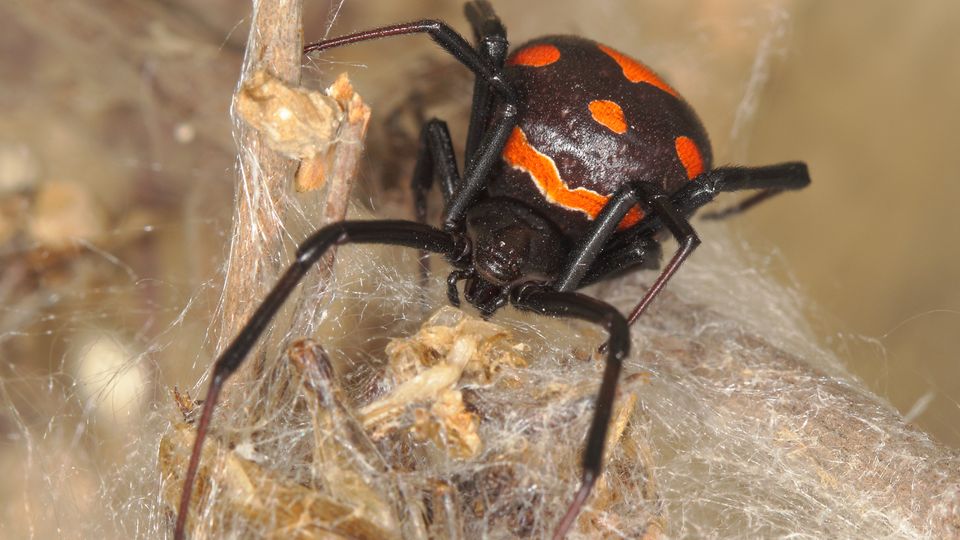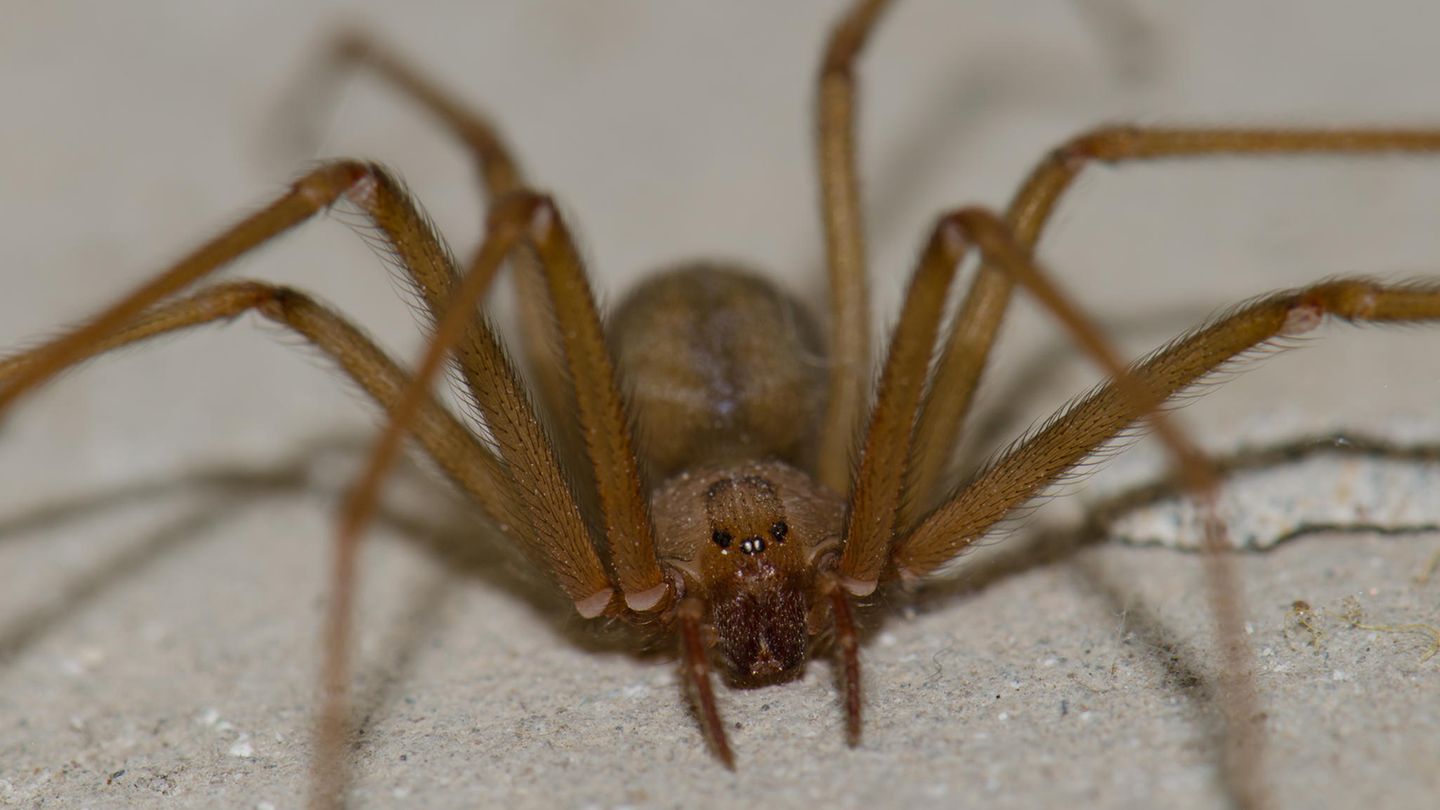In Italy, bites from the brown violin spider have already led to two deaths. The poisonous spider is also spreading to Mallorca and Ibiza. What you need to know now.
Poisonous spiders are on the rise. At least eight poisonous spider species already live in Germany, and they can also be dangerous to humans. In severe cases, a bite from the wrong animal can lead to paralysis, amputation and even death. Most recently, the Nosferatu spider, which was introduced from the Mediterranean region, caused a stir.
There is currently growing concern about the spread of the brown violin spider. In mid-July, a 52-year-old man died in Sicily days after being bitten by the poisonous spider. In mid-August, a second death was reported. A 23-year-old man from Apulia died of septic shock and organ failure a month after being bitten. In Italy, people have been worried for some time about the spread of the animal, and the same is true in Spain. Bites have also been recorded there – including on the popular holiday islands of Mallorca and Ibiza.
Everything you need to know about spiders and what you can look out for on your next vacation to protect yourself. An overview.
How do you recognize a violin spider?
The poisonous brown violin spider or Loxosceles rufescens belongs to the so-called recluse spiders. It reaches a manageable body length of 7 to 9 millimeters. Unlike most spiders, it has six eyes, not eight, and is classified as a six-eyed sand spider. The eyes reflect light. The brown violin spider has a yellowish-brown color and a characteristic pattern on its body that resembles a violin.
Where is the poisonous spider widespread?
The violin spider is the only Loxosceles species that lives in Europe. It is mainly found in the Mediterranean region, but is now widespread worldwide – including in North America and Southeast Asia. In Italy, people have been concerned about the spread of the poisonous spider for some time. The animal is also increasingly found in the Netherlands, Spain, Switzerland and the Czech Republic. Researchers at the University of the Balearic Islands assume that the spider will continue to spread in Europe and have issued a warning. The online portal provides an overview of the spread of the violin spider.
Do violin spiders live close to humans?
“Even though Loxosceles species have a certain affinity for buildings, they lead a very hidden life, are rarely seen and bites are very rare,” says the non-fiction book “Spiders – Everything you need to know.” According to the book, the poisonous spiders are nocturnal and like to hide in attics and garages during the day, mainly in cracks and crevices. The poisonous spider can survive for almost half a year without food and water. The brown violin spider is rarer in rural areas.
How common are violin spider bites?
So far, it has been rather rare. Apart from the two fatal bites in Italy, only a few other incidents are known. Between 2022 and 2023, four cases of violin spider bites were documented by zoologists from the University of the Balearic Islands. One of these occurred on the popular holiday island of Mallorca, and other cases occurred in Catalonia and the Basque Country. No cases are known in Germany so far.
How do you recognize a violin spider bite?
A bite from a violin spider often goes unnoticed at first. The bite causes a blister to form at the site. This is red, painful, itchy and can develop into an ulcer. This is often followed by necrosis, i.e. the death of the skin, according to the expert website. In severe cases, large areas of tissue can be damaged, deep into the muscles. This form of the disease is life-threatening.

Population is increasing: These poisonous spiders live in German-speaking countries
02:08mins
How dangerous is the venom of the brown violin spider?
The bite of the brown violin spider is initially harmless and is described as a slight sting, if it is felt at all. Symptoms often do not appear until hours later. A woman who was bitten behind the ear in Mallorca in 2022 subsequently had to be treated for pain, fever, dizziness and numbness in her arms and legs, among other things. It took about two weeks for her to recover.
The venom of the brown violin spider contains sphingomyelinase D, which can cause skin necrosis in severe cases. These require urgent medical treatment. In 2021, a vacationer on Ibiza had to have two fingers amputated after being bitten by a violin spider.
How is a bite wound treated?
The wound should be cleaned and the area cooled. People who have been bitten should seek medical help quickly so that the wound can be treated properly, for example with cortisone and antihistamines. “The bites usually heal well and only leave a small scar,” say the “Lifeline” experts.
Source: Stern
I’m Caroline, a journalist and author for 24 Hours Worlds. I specialize in health-related news and stories, bringing real-world impact to readers across the globe. With my experience in journalism and writing in both print and online formats, I strive to provide reliable information that resonates with audiences from all walks of life.




